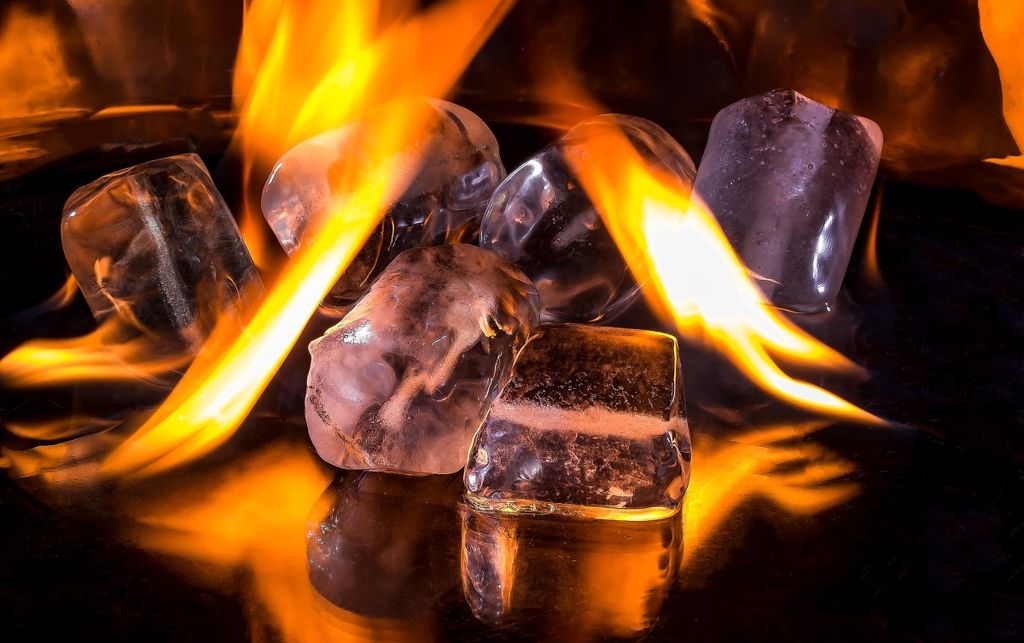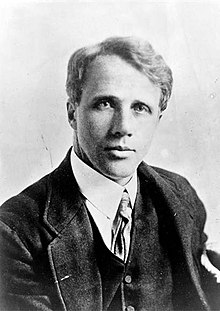- Books Name
- First Flight and Foot prints
- Publication
- ACERISE INDIA
- Course
- CBSE Class 10
- Subject
- English
Poem-2
Fire and Ice
By Robert Frost

Fire and Ice Poem Introduction
The poem "Fire and Ice" by Robert Frost expresses the profound idea that the world would end in one of two ways: by ice or by fire. Both components are likened to self-destructive human emotions: hatred and desire. The poem, in a very artistic way, underpins the philosophy that we let our emotions rule us, and if we don't control them, they will inevitably destroy everything around us. Similarly, he believes that fire and ice are equally capable of bringing the world to an end.
Fire and Ice Poem Summary
Robert Frost's poem "Fire and Ice" is a powerful symbolic poem in which fire represents desire and ice represents hatred. He used the concept of two groups, each of which has their own possible explanation for the end of the world. One believes that fire alone can destroy all forms of life on Earth, whereas the other believes that if ice could cover the earth's surface as a result of extremely low temperatures, it would result in the end of the world. Both components are compared to self-destructive human emotions such as desire and hatred.
The poet is of the opinion that he has been very closely associated with "fiery desires," which he believes are capable of bringing human beings to the brink of destruction. As a result, he regards fire as more capable of annihilation. But then he realises that "icy hatred" is just as capable of destroying humans, albeit more slowly and steadily. As a result, if the Earth were to end twice, ice would be just as good as fire. Whereas a fire would cause immediate destruction, ice would cause silent damage. Similarly, if fire is pure emotion, ice is pure reason.
Thus, the poem, in a very artistic way, underpins the philosophy that we let our emotions rule us, and if we don't control them, they will undoubtedly bring us all to the verge.
Fire and Ice Poem Explanation
Some say the world will end in fire
Some say in ice.
From what I’ve tasted of desire
I hold with those who favour fire.
- Desire- a strong feeling of wanting to have something or wishing for something to happen
- Favour- approval, support
The poem expresses the profound idea that the world will end in one of two ways: ice or fire. One school of thought holds that the Earth's core will one day become so hot that it will erupt in fire, destroying the planet's surface. The second group, on the other hand, claims that if the temperature drops to the point where life on Earth becomes impossible, the same catastrophic effects will occur. The poet then compares fire and ice to the destructive qualities of human emotions such as desire and hatred. He claims that based on what he knows about "fiery desires," he would side with those who claim it would be fire. By saying so, he conveys the idea that humans allow their emotions to rule them, and the result of uncontrolled longing is chaos.
But if it had to perish twice,
I think I know enough of hate
To say that for destruction ice
Is also great
And would suffice.
- Perish- die
- Suffice- be sufficient
Then, instead of dismissing the first option of fire, he considers that if the world must end twice, ice would be equally capable of doing so. He draws a distinction between "ice" and "hatred." The human capacity for insensitivity and hatred has the potential to destroy one's soul. Though slow and steady, it has the same effect on us as desire. So, if given the choice between fire and ice, ice would be just as effective as fire in destroying the world.
Fire and Ice Poem Literary Devices
1. Rhyming scheme- Aba
abc
bcb
2. Assonance- it is repetition of vowel sounds in same line. The repetition is at different places in different words.
Example- The long sound of “o” in “I hold with those who favour fire”
3. Alliteration- alliteration is the repetition of a consonant sound at the start of two or more closely placed words.
Example- The sound of “f” in “favour fire”, “w” in “world will”
4. Imagery- Imagery is used to make readers perceive things involving their five senses. Example- “Some say the world will end in fire”
“To say that for destruction ice Is also great”
5. Anaphora- the repetition of a word or expression at the start of two or more consecutive lines.
Example – “Some say” is repeated at the start of lines 1 and 2.
6. Personification- Personification is to give human qualities to inanimate objects. In this poem, “fire” and “ice” are capable of destruction. Thus, the poet personifies fire and ice by giving them mind and power to destroy anything.
7. Enjambment- it is defined as the thought or clause that does not come to an end at a line break, rather it moves over to the next line.
Example- “From what I’ve tasted of desire
I hold with those who favor fire”
About the Author

Robert Frost is a well-known poet from the United States. He possessed a strong command of American colloquial speech and created realistic depictions of early rural life. His great work in poetry mostly depicted rural life in New England in the early twentieth century. He used poetry to investigate complex philosophical and social issues. Individuals honoured and frequently quoted him for his work throughout his life, and he also received four Pulitzer Prizes.

 Online English tutor
Online English tutor
 ACERISE INDIA
ACERISE INDIA
